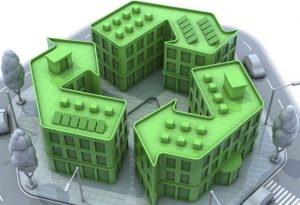SUSTAINABLE ARCHITECTURE
Sustainability is not just a building surrounded by trees, is the optimization of natural resources and building system so that it minimizes the environmental impact of buildings in the environment around them. Is a society’s ability to make conscious and responsible use of its resources, without exhausting them or exceeding their capacity for renewal, and compromising access to them by future generations.
For a sustainable architecture, the interaction of three basic concepts was needed which were the social, economic and environmental, yet over time they implemented two more which are the political and the education of the social set for a functioning.
I would like to highlight two of the basic concepts which are:
ECONOMIC:
Sustainable architecture opts for a new vision in economics, which is known as Circular Economy. Its objective is to implement a model based on reuse, repair, Remanufacture and, in turn, the recycling of materials and / or products, with respect to the use of virgin raw materials.
However, many have taken advantage of this initiative, since they disguise companies that are really harmful to the environment (therefore for humans as well) by selling them as eco-friendly companies. That is why it is very important to know about the subject and what a sustainable company really encompasses since it is much more than green.
SOCIAL:
Society is one of the most affected by pollution, however, it is the most ignorant. Society destroys itself and takes vegetation and animals with it as if they were its property. Nevertheless, many research, create and generate sustainable architecture. They know the great negative impact that this field of constructions leaves and they are looking for a quick, eco-friendly, efficient and effective change of materials that can replace those that today damage the planet earth.
Finally to be able to make a sustainable architecture we need:
CHOICE AND ORIENTATION OF THE HOME: to seek an environment with a lot of vegetation as this, help to reduce pollution being more feasible sustainability. It is also relevant for better thermal regulation and reduction of energy expenditures.

USE OF RENEWABLE ENERGIES: these energies are inexhaustible sources allowing energy autonomy, as these don’t depend on any external resources. This in turn helps to reduce the production of polluting gases such as CO2.
THERMAL ISOLATION: thermal insulation is one of the most important points when building since thermal variation must be made difficult, therefore, it is necessary not to lose energy through leaks in the house, thus avoiding losing heat radiation in the rooms and avoiding a large energy expenditure.

USE OF REUSABLE MATERIALS: many of the materials used today end up as waste so is very important to know which eco-friendly material we should replace them with and thus avoid contamination.